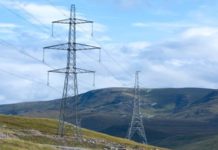Ofgem has urged distribution network operators (DNOs) to step up efforts to embed flexibility services within day-to-day operations.
Speaking at National Grid ESO’s Power Responsive event last week, Louise van Rensberg, interim deputy director, energy systems transition at Ofgem, said the clock was ticking on bringing wider flexibility incentives into the regional monopolies’ allowed spending.
“We need to get to the end of this year having seen changes come into play, having seen better co-ordination [between networks]. Because at the end of the year, DNOs need to think about business plans,” said van Rensberg.
“You can’t build a business plan if you don’t know how you are going to value flexibility, or compare flexibility to other network solutions. So [embedding flexibility] is a very important part of those business plans … and I can’t stress enough, this is a big year in this space and we must achieve progress.”
Van Rensberg said market-wide half hourly settlement will be a critical building block to achieving system-wide flexibility, but acknowledged it will “likely take three to four years to put in place.”
In the meantime, the regulator is “trying to ensure flexibility providers get the value they provide to the system”, she suggested, with the ongoing review of network access and forward looking charges “a key part to sending the right signals to meet net zero [targets]”.
Ofgem, she said, will “shortly” be publishing a decarbonisation plan.
Jam tomorrow?
In the lead up to the general election, Ofgem confirmed it will remove Triad avoidance after next winter.
Triad, which allows businesses to significantly reduce power bills by curbing consumption or switching to onsite generation during winter peak periods, is a cornerstone of the business case for flexibility and demand-side response.
Van Rensberg was asked if the regulator recognised the negative impact killing Triad will have on industrial and commercial flexibility and whether Ofgem has worked out how to ensure the flex market does not diminish as a result.
She replied that the regulator “completely recognises” that question and will be holding a meeting “in a couple of weeks to set out what we see are important elements of the value stream and where we can work to ensure some of the value streams for flexibility providers can come forward and grow”.
Van Rensberg added there is also “a lot to be done in removing transaction costs” to bring more providers into market.
Standard issue
In response, Randolph Brazier, head of innovation and development at the Energy Networks Association, said DNOs are working to try and harmonise dispatch, settlement and flexibility products themselves in a bid to remove cost and complexity.
“We are trying to standardise across networks,” said Brazier. “There are some standard active power services and we are looking at new services, for example, harmonics suppression. We are trying to create a uniform contract across networks so people don’t need to go through wildly different paperwork.”
Valuing flexibility has been “a challenge,” Brazier admitted, given DNO-led markets are nascent and illiquid.
He said the ENA will this week launch a consultation around standardisation of flex services and plans to update flexibility information on its website to show forecast requirements for 2020.
Marketing required
Of the 947MW of local flexibility tendered in 2019, DNOs are “on average getting about 20 per cent of what we want,” said Brazier. “Some areas do not get any response at all and have to keep going out to tender.”
Alongside better signposting and standardisation, he said networks must step up dissemination and marketing efforts.
“Stakeholder engagement is key,” said Brazier. “We need [businesses] to make the market work and get more flexibility onto the system. We are open to ideas.”
Update: The ENA has now published its 2020 work plan and consultation. It seeks views from businesses, aggregators and community energy groups on its plans for flexibility for the year ahead.
Networks, aggregators, the ESO and end user demand-side response providers will discuss the future of flexibility at The Energyst’s Delivering Net Zero conference and exhibition, 22-23 April. It’s free to attend.
Related stories:
Free demand-side response report
WPD and Nordpool combine on broader flex market trial
Charging reform ‘key to unlocking DNO flex’
UKPN: We’ll give flex every change before resorting to reinforcement
Balancing Mechanism now open to smaller players
Centrica’s local energy market now selling flex across transmission and distribution
Local flex markets: Centrica eyes on the prize
All DNOs commit to considering flex over reinforcement
WPD contracts 119MW of flexibility
WPD signs deal with Piclo to boost flex procurement
SSE to deploy flex across entire network, down to household level
All DNOs trialling Piclo platform
Follow us at @EnergystMedia. For regular bulletins, sign up for the free newsletter.



